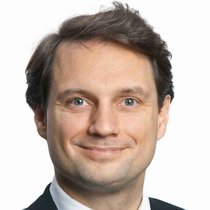Last June, electric grid operator Liander announced that the power grid in Amsterdam reached it maximum capacity in two areas in the city – one of these being Buiksloterham-Zuid/Overhoeks. Liander indicated that this area is limited by the capacity of the medium voltage (MV) electricity grid.
As a result, until the grid capacity expands, new large consumers (i.e. commercial or industrial energy consumers) cannot receive power from the grid. As the option identified by Liander to solve this issue, the grid expansion in Buiksloterham-Zuid/Overhoeks was brought forward in the planning. This is currently expected to be realized early 2023.
In collaboration with TU Delft, AMS Institute investigated the electricity grid in this specific area with the support of the City of Amsterdam and Liander. Specifically, to find if there are alternative solutions that allow safe grid integration of large new consumers before grid expansion is realized.
Limited power grid capacity. Why?
The Dutch economy continues to flourish, and urban development, digitization and the energy transition accelerates further. To illustrate, the rapid rise of electrification – amongst others related to electrified mobility and heating – lead to an immense increase in demand for power. So much so that the existing electric grid could reach power demands that exceed the capacity of grid components like cables and transformers. Also, such high demands could trigger safety procedures to disconnect network components to prevent damage to these components. In daily life, these possible disconnects would appear as outages.
Unfortunately, keeping grid expansion up to speed with aforementioned developments is not always possible anymore due to their rapid pace and the additional challenges of limited skilled workers, limited materials and local procedures. As a result, in various regions in the Netherlands, new large consumers (i.e. commercial or industrial energy consumers) cannot receive power from the grid. Instead, these new consumers typically resort in the temporary use of fossil-based generators until the grid capacity is expanded and the grid operator subsequently allows power consumption.
“The pressure on Amsterdam's electricity network is increasing. Within the Taskforce Congestion Amsterdam, the City of Amsterdam - together with its partners Liander, TenneT and Port of Amsterdam - is looking for ways to reduce this pressure in order to allow developments in the field of housing, sustainability and economic growth to go ahead.”
Naut Loots | Strategic Advisor Energy & Sustainability | City of Amsterdam

“To meet the increasing demand for electricity, we are expanding the electricity grid considerably in many places. For example, by building new substations and adding additional electricity cables. However the time needed to expand the capacity of the grid takes longer then the fast increase in demand for electricity. Therefore Liander needs to limit the access for new non-residential consumers in various points in the grid.”
Guido Massaro | Net architect | Liander

Often the focus regarding electric grid capacity limitations (logically) is mainly attributed to the capacity of substations, as the number of connected consumers directly dependant of this capacity is very large. In 2021, Amsterdam had 22 substations in total.
The limited capacity in the medium voltage (MV) cables and transformers which distribute the power form the substation to consumers are only limitedly addressed within Amsterdam. These challenges have a different scoping size – there are 2300 MV-transformers to support power distribution in Amsterdam – but are expected to limit the urban environment as well. That is exactly why research and innovations to tackle these aspects is much needed.
Optimal routing in the grid creates additional capacity
To find alternative solutions that would allow safe grid integration of new large consumers, AMS Institute, together with the research group Intelligent Electrical Power Grids of TU Delft, analyzed the specific situation in the Buiksloterham-Zuid/Overhoeks MV electric grid.
In this study, the researchers used energy consumption data of current large-scale consumers in this area and were able to create a network model for detailed calculation of energy flows in the medium voltage network in Buiksloterham/Overhoeks. Although available data was limited for this exercise and some assumptions and simplifications were needed, the study showed that with current policies and with limited data and generic models, the expected increase of needed power by consumers in the BZOH area is indeed exceeding capacity limits.
“Finding the optimal routing in a highly connected MV-grid can be an optimization problem for grid operators, especially when combining capacity maximization strategies and minimizing outage effects. This study showed how multiple changes in the routing of the grid would increase the capacity in both normal and outage situations.”
Peter Palensky
Professor & AMS PI
3 promising options to unlock existing capacity in the grid
First and foremost, optimal network configurations have a large impact on the duration, frequency and locations of the expected high loads that stress the grid. Grid operators often change the network configuration for maintenance, in outage situations or to integrate new consumers and cables. However, an optimization for congested areas would require different strategies then currently practised.
Combined with an alternative reserve capacity for failure or maintenance then currently in use, critical grid situations can be minimized. Bearing in mind the aforementioned data limitations, the research team found that there are promising opportunities for this alternative power reserve:
1) Temporarily switching off collective heat pumps in high-rises (Demand Response)
In case of the most unfavorable failure scenarios in the medium-voltage grid of Buiksloterham/Overhoeks in the short period up to early-2023, temporarily switching off collective heat pumps in the new high-rise buildings is a promising solution to prevent medium-voltage congestion.
This shutdown would be only during daily peak hours during a period of typically 3-10 days while Liander is repairing the failed component. Most importantly, this can probably be done without loss of comfort for residents, due to the current insulation standards for the new built environment. It would be directly cutting CO2 emissions and is, if properly coordinated, relatively easy to implement in the short term.
Although the possibility of the specific grid failure in this short time frame (until mid-2023) cannot be ruled out, a risk analysis can provide insights to make an informed decision if switching off of specific heat pumps is the most promising option for additional reserve capacity.
2) Integrating two energy storage systems at strategic locations in the network
This study shows that grid failures that particularly take place at the beginning of two cables, lead to very high loads. Our researchers indicate that storage with a power capacity up to 2MW would be needed to avoid any possible overload in the network at any time of the year. The study also showed that the relation between power size and grid overloading hours prevented is non-linear. Meaning that lower power capacity can already be of significant value in solving possible overloading scenarios. The study did not optimize for the battery energy capacity, which can be part of subsequent work.
3) Integrating two generators (diesel, fuel cells) at the location of the batteries
A pragmatic solution, one that has often been implemented by grid operators at remote locations. Compared to batteries and demand response, a solution with significant carbon emissions, but operational for the typical duration of Liander's repair work of 3 to 10 days if the grid would fail. This contrasts with the possible daily use of generators by large-scale consumers that are awaiting grid capacity.
“To actively implement any of these solutions, it would require Liander to re-assess current policy limitations, and explore a more detailed grid analysis in congestion locations, refraining from using base numbers that are used for long term capacity planning and more accurate forecasting of power needs of new consumers.”
Paul Voskuilen
Former Program Developer at AMS Institute

“Unfortunately there are no easy fixes for the congestion problems on the Dutch electricity grid. Liander is investing in significantly expanding the capacity of the electricity grid. In addition innovative solutions are necessary for a fully decarbonized energy system. This research by AMS Institute and TU Delft confirmed the importance of some of the solutions we are working on and provided valuable insights for the academic community.”
Paul van Engelen | Regional Manager | Liander

Logical next steps
As a result of further electrification and the accelerating energy transition, it is widely expected that medium-voltage congestion will affect several areas in Amsterdam and its surroundings in the (near) future.
The researchers emphasize that grid expansion is crucial in expanding capacity. However, this could be temporary complemented with the active utilization of the existing grid using optimal routing and adding additional strategic reserve capacity (through customer flexibility, batteries, or generators) until grid expansions are realized, especially due to exactly this temporary nature of the challenge.
“As medium voltage grids will continuously become subject to higher loads in the city of Amsterdam and throughout urban areas in the Netherlands, further research along the lines presented here can highly contribute to unlocking much needed grid capacity.”
Pedro Vergara Barrios | Assistant Professor at the Intelligent Electrical Power Grids Group | TU Delft

For the structurally safe deployment of this tactic, a logical next step is to make an inventory of vulnerable grid sections in the short term and to start investigating a risk-based reserve count for the city of Amsterdam.
For the area of Buiksloterham-Zuid/Overhoeks, Liander unfortunately had to announced that congestion is also expected in the Noord-Papaverweg substation. This makes that the solution possibilities for the MV grid in Buiksloterham-Zuid/Overhoeks are dependent on congestion characteristics of the substation before to be implemented.
“The results of this study show that there are possibilities. However, they are not easy to implement due to, for example, legislation and regulations. In the coming period we must further explore what is needed to be able to implement as many potential solutions as possible.”
Ruben Voerman | Program Manager Electricity Supply Amsterdam | City of Amsterdam

The full public summary including recommendations (in Dutch) of this study can be found here at openresearch.amsterdam.
The official Liander announcement on grid congestion for Noord-Papaverweg and Buiksloterham-Zuid/Overhoeks can be found here.

